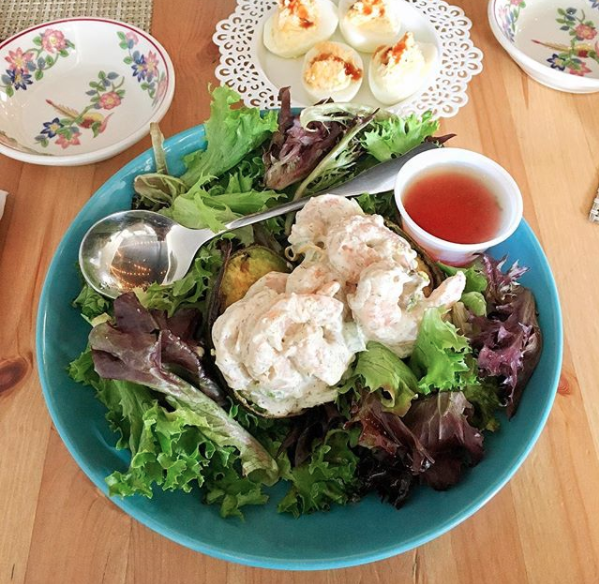Common Challenges with the Hunger and Fullness Scale in Intuitive Eating
If you're familiar with Intuitive Eating, then you know about the hunger and fullness scale, a tool to help you get back in touch with your hunger and fullness cues. This blog post answers some of the common questions and challenges I hear from clients in my practice when trying to apply the hunger fullness scale to their eating.
Working with clients on intuitive eating, one tool that is commonly used is the hunger and fullness scale. I did an in depth run down on how to use the hunger and fullness scale in this blog post, which I’d encourage you to read, but if you haven’t had a chance, here’s the tl;dr:
Eating disorders, disordered eating, and dieting can all disrupt hunger and fullness cues by suppressing and ignoring hunger cues in an attempt to eat less. For most people, this restriction results in binge eating or eating until the point of uncomfortable fullness. Over time, both hunger and fullness are only recognized and responded to in their most extreme presentations.
The hunger and fullness scale is a tool that can help you get back in touch with the more subtle signs of hunger and fullness. Our body is designed to self regulate around food, and our hunger and fullness cues help steer us towards eating an appropriate amount of food for our own unique biological needs - needs that can change day to day based on multiple different factors. By providing language to describe the different levels of hunger and fullness, it can be helpful both for reconnecting to cues and for figuring out how to respond to them.
Here’s the hunger and fullness scale we use in my practice:
P.S. I've seen people use different markers/physical cues on the hunger/fullness scale, and just know there's no right or wrong! It's really whatever works for you, as the whole point is to simply tune into these cues, not identify the number with 100% accuracy.
Seems pretty cut and dry, right? In practice though, it can get a bit more complicated. Many of the same questions come up for my clients, so I thought it'd be helpful to share an FAQ on the hunger and fullness scale. If you have a specific question I don't hit on in this post, leave a comment below and I'll get to it!
Common Questions About the Hunger and Fullness Scale
What if my work/school/etc schedule prevents me from eating when I’m hungry?
In an ideal world, you'd have the time and access to food so you can eat what you need when you're hungry. But we all have things like jobs and classes and errands and long airplane flights and meetings where we might not be able to pause at that exact moment when we hit a 3 or 4 on the hunger scale.
This is where practical hunger comes in, one of the four types of hunger in intuitive eating. Sometimes honoring practical hunger looks like eating a meal or snack just because you have the time for it, and you know you won’t have a chance to for awhile, similar to how you might use the restroom before a road trip even though you don’t really need to go.
This shrimp salad stuffed avocado over greens was one of my favorites from Spotted Salamander (my favorite lunch spot back in Columbia), but without a source of carb, it usually just gets me to a 6 on the hunger and fullness scale. Whenever I ordered it for lunch, I get soup or a pasta salad on the side, or try to break for a snack a little earlier than usual.
Other times honoring practical hunger may look like intentionally overeating a bit. If you know or suspect you might not be able to eat again in the next 3-4 hours, it makes sense to eat until you're slightly uncomfortable, more like an 8 on the hunger and fullness scale. Eating more food or choosing something a bit richer and more filling with a good bit of fat and protein to hold you over may help you feel adequately fueled for a longer amount of time.
What if I get hungry again immediately after eating?
This can happen for a few different reasons, but one of the most common is when someone stops eating when they are no longer hungry (a 5) rather than when they are satiated and satisfied (a 7). This makes sense when diet mentality is in charge and you're trying to eat as little as possible, but when you look at it on the scale, it's easy to see why if you stop at a 5, even though you no longer feel the discomfort of hunger, it won't be long before you’re hungry again. That might be an appropriate stopping place if you’re looking to tide yourself over for a meal you’re planning on eating shortly, but not if you’re trying to eat a meal that satisfies you until your next meal or snack break.
Instead of trying to eat just enough to make hunger go away, aim for satisfaction. You’ll likely feel a sense of fullness or slight stretch to your belly. You might even find it helpful to experiment with aiming for an 8 for a little while so you can start to understand what satisfied and satiated really feels like. You also might want to check out this blog post I wrote on why you might still be hungry after eating.
Wasn’t hungry, but it was a freshly baked (sesame chocolate chip) cookie kinda evening.
What if I don’t feel hunger in my stomach?
Most people think of hunger as an emptiness or gnawing in their stomach, but hunger can present in different ways. For example, while I usually experience hunger as a feeling in my stomach, first thing in the morning, I rarely notice the physical sensation of hunger. For me, I know I'm pushing it too long without eating breakfast if I start to feel anxious. That's my sign that I need to eat pretty immediately! In fact, anxiety is a pretty common hunger cue, so I wrote a whole post about it!
Other signs of hunger you might notice: low energy/fatigue, moodiness, poor attention, headache, stomach upset, dizziness, or shakiness. If you notice one of these physical signs pop up 2-3 or more hours after you last ate something substantial, it's a good chance it's hunger.
I don’t have much of an appetite in the morning, but if I push off breakfast too long I get pretty anxious (aka hungry!). Something simple and carby usually works well for me. For awhile, I was really into the Tik Tok famous custard toast.
That said, some people really struggle to feel hunger and fullness cues. If you have a history of trauma and/or dissociation, significant gastrointestinal disease, or neurodivergence like sensory processing differences, autism or ADHD, the hunger and fullness scale may need to be adapted for your needs, or it just might not be the best tool for you. If so, it’s OK if you need to rely on the clock or a more structure meal plan. You’re not doing intuitive eating wrong by relying on the clock! Aiming to be a “perfect” intuitive eater (whatever that means!) isn’t the goal of this work - it’s learning how to feed yourself in a way that feels good for you.
Can I eat when I'm not hungry?
Yes! Let's not turn intuitive eating into the hunger/fullness diet. Outside of practical hunger, which I’ve already discussed in this post, there are other reasons to eat besides hunger. A big one is pleasure! It is a perfectly acceptable, and I’d argue healthy, reason to eat. There may be times that the opportunity to enjoy something really delicious when you aren't feeling hunger, so why miss it? While intuitive eating doesn’t necessarily mean impulsively eating every tasty looking thing that crosses your path (although it might if that’s how you want to feed yourself!), there is plenty of space to eat just because something looks good.
What I love about snack meals is that it’s really easy to add more, or leave food on your plate, if you’re hungrier or less hungry than anticipated.
Emotions are another reason you might decide to eat outside of hunger. I’ve talked about how emotional eating can be a tool for soothing or coping with emotions extensively on this blog (read this or this), but essentially, food can be a productive way to cope with emotions, as long as it’s a tool that’s not overused or you don’t have other tools for coping with emotions.
What if the numbers on the hunger and fullness scale totally stress me out?
If you have an eating disorder or a history of anxiety, OCD or perfectionist traits, you might find the numbers on the hunger and fullness scale to be pretty overwhelming. It’s easy to get activated by numbers, and no matter how many times I say there’s not a “right” or “wrong” place to start and stop eating on the scale, there will still be people who find themselves using the hunger and fullness scale to beat themselves up or restrict.
If that’s the case, you might find it helpful to focus on using words to describe your hunger rather than numbers. Here’s a helpful chart I made for my clients that you can use as a resource:
Instead of using number or ranking your hunger and fullness cues on a scale, try to find words to describe what you are noticing. Over time, you’ll learn how to navigate the different sensory experiences of hunger and fullness.
The Bottom Line
Remember, while the hunger and fullness scale is a common tool in intuitive eating, it’s not a rule. If you’re struggling to use the hunger and fullness scale, I hope this blog post address some of your questions and challenges. If not, please feel free to leave a comment and I’ll do my best to answer!











